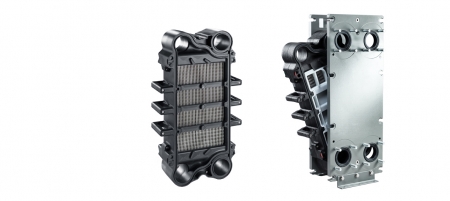Pleat Cooler
wide range of industrial applications

The Pleat Cooler is designed for the same areas of use as gasketed plate heat exchangers - a wide range of industrial applications. Challenging fluids, process criticality and continuity all mean good fit for Pleat Coolers.
Since its inception in 2001, the company has developed and refined its original core technology, which is the geometry of a heat transfer element. It provides the transport of heat from one fluid to another through a thin layer of metal without the fluids being in direct contact. This forms the basis for the industrial applications within the heat exchanger and evaporator markets.
The patented Pleat cooler combines the best from two worlds; performance as a traditional Plate Heat Exchanger, and maintenance-friendly as replacing an air filter. It consists of few, and handling-friendly elements. This allows any crew to gain better control in their systems, keeping the entire system cleaner and more efficient.
The Pleat Cooler can easily replace conventional gasketed Plate Heat Exchangers in the majority of installations, and also a minor part of the shell & tube market.
The Pleat Heat Exchanger has been developed with two main perspectives,
1. The patented Pleat structure
2. Market / end user demand for a more maintenance and operation friendly heat exchanger.
The Pleat geometry allowed a totally new approach for solving the old heat exchanger cleaning / maintenance problem. With the clear idea of a heat exchanger that should be as easy to clean as replacing an air filter cartridge, the goal was set.
Key features
- Rugged design, made for being worked with
- Easy to open/close for maintenance
- Easy to handle elements
- Easy to clean elements
- Integrated inline filter
- Very few gaskets
- Configurable flow pattern by flow plates
- All basic dimensions and performance as gasketed plate heat exchangers (PHE)
These features result in a substantial saving in maintenance time, hassle and cost. As a sample, this has in the marine market been estimated up to 90% saving.